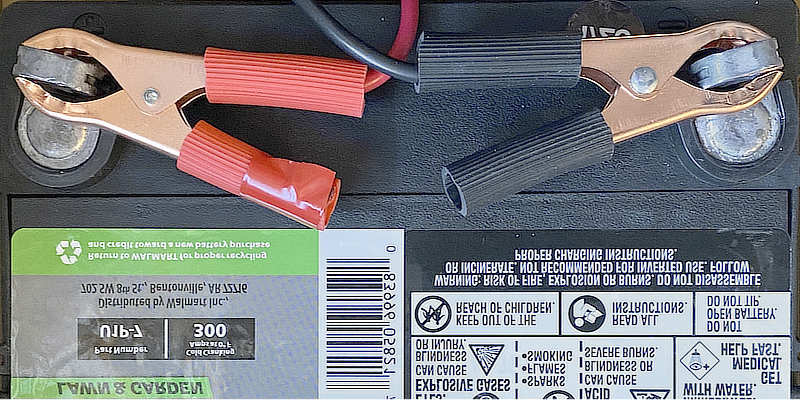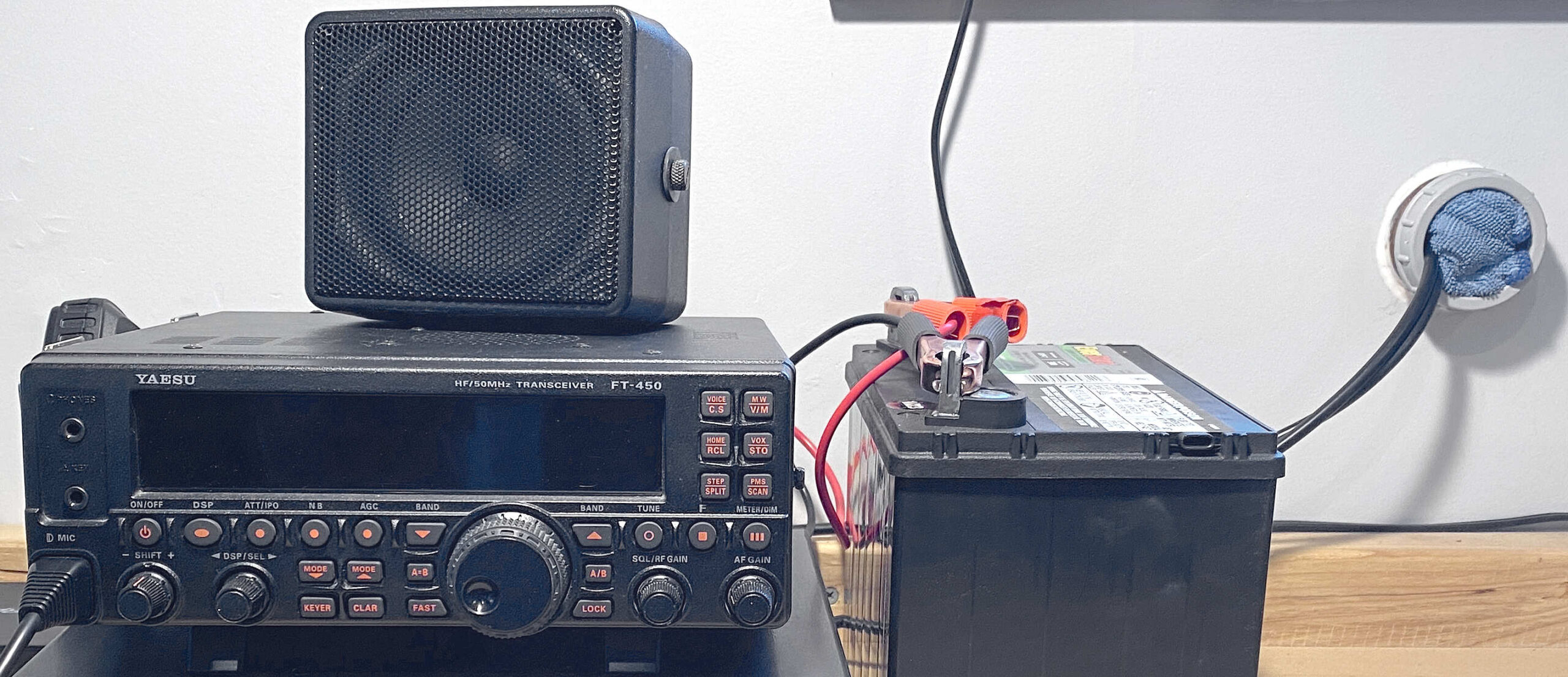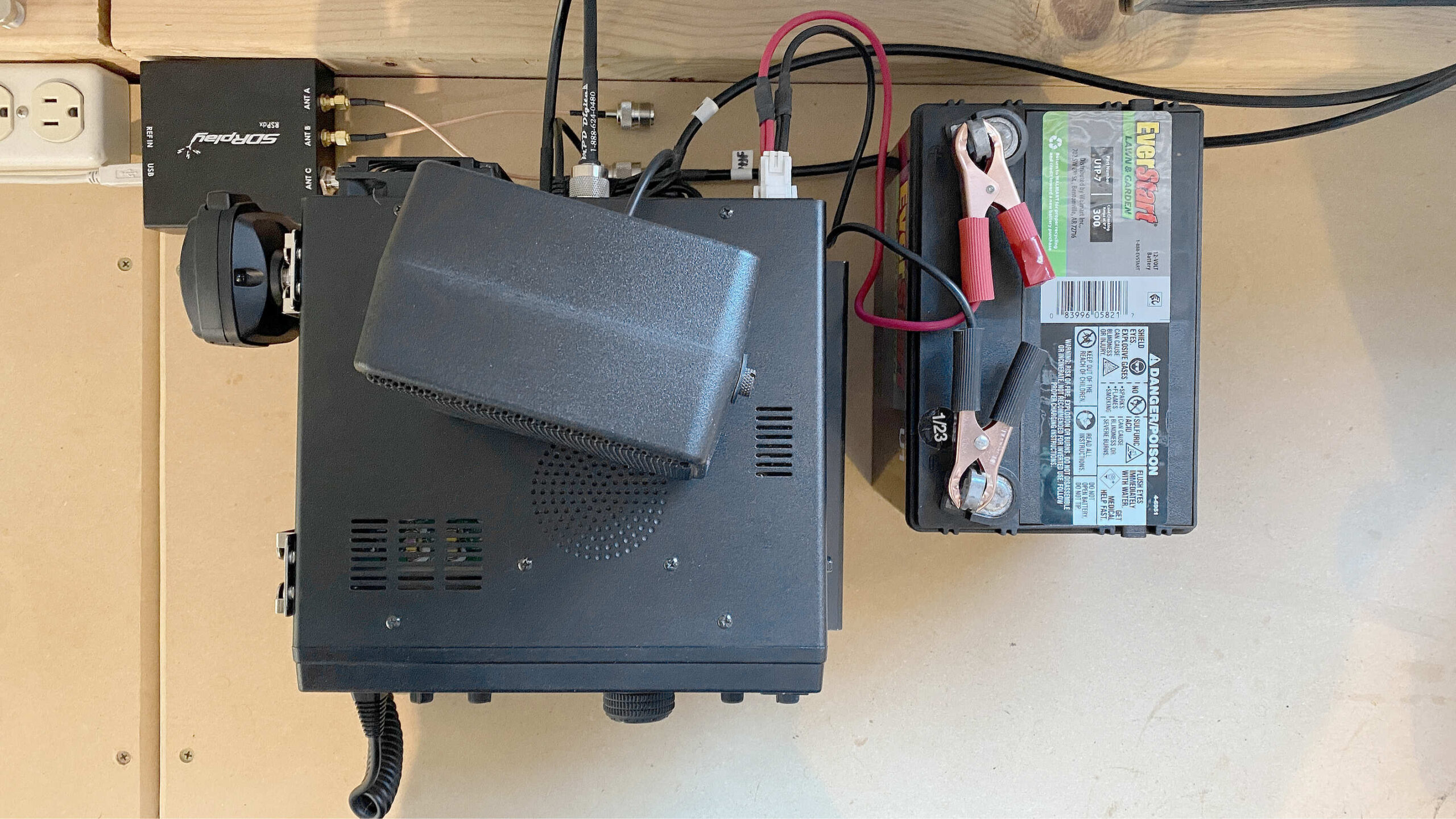12 Volt Battery Power For Ham Radio

Particularly from a preparedness point-of-view, a preferred power source for a ‘ham radio’ (amateur radio transceiver) is a 12 volt battery. That is, compared with using a plug-in power supply such as a 120 VAC to 12 VDC converter.
Why do ham radios have a dc power input?
Well, there are a few reasons… So they can be operated in a vehicle. So they can be run on emergency power (e.g. 12 volt deep cycle battery). A DC battery is ‘pure’ and clean power. Or add a power supply (AC to DC converter) and the radio can be conveniently run from AC power in your home.
Ham radio DC voltage specification
Amateur Radio equipment is usually specified at 13.8V DC. Why that voltage? Because the charging voltage in the average vehicle is typically very close to that. A fully charged lead acid battery (at rest) will measure ~ 12.7 volts. Most Amateur equipment is marked with a tolerance figure for its DC voltage. You might typically see +/- 10% (12.4 – 15.2), so there’s a range.
Advantages of using 12 volt battery for ham radio power

Although modern well designed AC-DC converter power supplies can be very good, a 12 volt dc battery is literally pure-clean power. A 12 volt battery is portable (though on the heavy side) – operate from anywhere. A 12 volt battery can be recharged from a variety of sources, including solar (making the 12 volt battery an attractive option for prepping/preparedness in this regard).
Disadvantages of using a 12 volt battery for ham radio
To be fair and objective, you do need to be mindful that the battery will need recharge, whereas a AC-DC power supply works ‘forever’ (as long as there’s grid power). Therefore you should periodically monitor the battery voltage (while it’s at rest for awhile) – see link at end of article for voltages.
Transmit uses LOTS more power from the battery than Receive. So the longer you transmit, the quicker the battery drains. This is where the size (amp hour rating) of the battery becomes more important.
I really like the following 4-stage charger / maintainer because it’s rated 5 amps (much faster charging than a small trickle charger). Though float trickle charge will maintain for extended periods of time.
Battery Tender 5 AMP, 12V Battery Charger, Maintainer
(Battery Tender on amzn)
12 volt battery size

A preferred size is a ‘deep cycle’, which are typically rated at ~ 100 AH (Amp Hours).
However I recently purchased an inexpensive ($39) 12 volt battery for my Yaesu FT-450 HF ham radio (pictured above). Got it at Walmart. It’s not a big deep cycle battery. Instead, a Lawn & Garden ‘Group Size U1’ EverStart (300 CCA), typically used for mowers. I preferred it’s smallish size to set on my bench next to the radio.
It’s not a deep cycle battery so there’s no official AH (Amp Hour) rating (which is very different from CCA Cold Cranking Amps). Best I could determine while searching online, this battery might be equivalent to ~ 35 AH. While I’m using this radio for ‘Receiving’ (measured at 1 Amp), I might get about 12 to 18 hours of operation until reaching 50% state-of-charge (the point at which you really need to recharge a lead acid battery).
I would get about 50 hours of receive time (until discharging 50%) with this radio if using a typical deep cycle battery (for example).
Transmitting, however, is another story. At 100 watts (~ 8 amps), my small U1 battery size will deliver maybe 2 hours. But who talks that long anyway?? The 100 AH deep cycle will provide ~ 6 hours before needing recharge.
Conclusion
If you’re into prepping & preparedness, and into amateur radio, you might consider a dedicated 12 volt battery for your ham radio power (be it HF, or VHF/UHF). It’s comforting to know that you could recharge the battery without grid power.
Renogy 200 Watt 12 Volt Portable Solar Panel with 20A Charger Controller
(Renogy on amzn)
[ Read: Battery State-Of-Charge Chart – 12 Volt Battery Voltage ]
